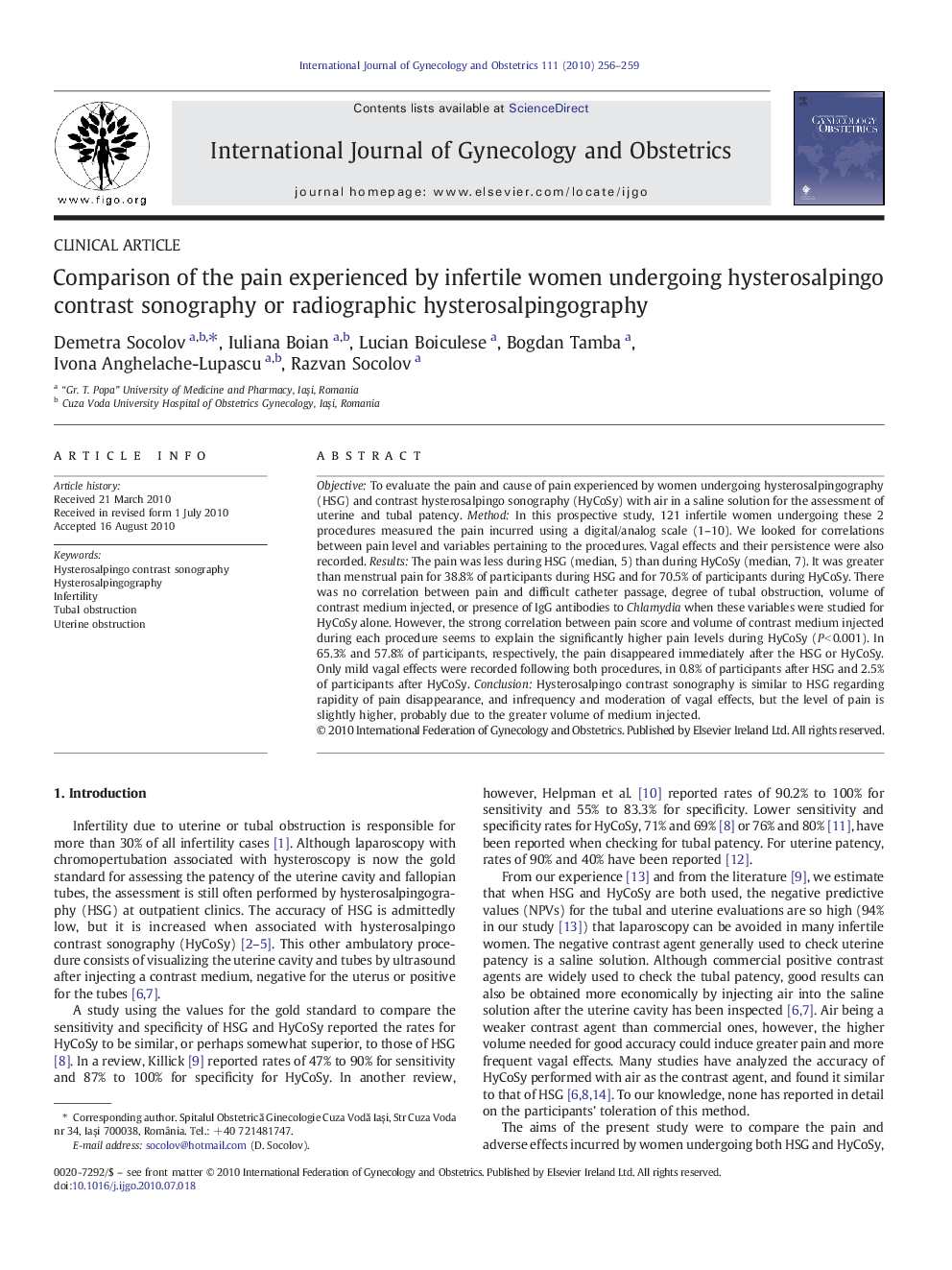| Article ID | Journal | Published Year | Pages | File Type |
|---|---|---|---|---|
| 3954443 | International Journal of Gynecology & Obstetrics | 2010 | 4 Pages |
ObjectiveTo evaluate the pain and cause of pain experienced by women undergoing hysterosalpingography (HSG) and contrast hysterosalpingo sonography (HyCoSy) with air in a saline solution for the assessment of uterine and tubal patency.MethodIn this prospective study, 121 infertile women undergoing these 2 procedures measured the pain incurred using a digital/analog scale (1–10). We looked for correlations between pain level and variables pertaining to the procedures. Vagal effects and their persistence were also recorded.ResultsThe pain was less during HSG (median, 5) than during HyCoSy (median, 7). It was greater than menstrual pain for 38.8% of participants during HSG and for 70.5% of participants during HyCoSy. There was no correlation between pain and difficult catheter passage, degree of tubal obstruction, volume of contrast medium injected, or presence of IgG antibodies to Chlamydia when these variables were studied for HyCoSy alone. However, the strong correlation between pain score and volume of contrast medium injected during each procedure seems to explain the significantly higher pain levels during HyCoSy (P < 0.001). In 65.3% and 57.8% of participants, respectively, the pain disappeared immediately after the HSG or HyCoSy. Only mild vagal effects were recorded following both procedures, in 0.8% of participants after HSG and 2.5% of participants after HyCoSy.ConclusionHysterosalpingo contrast sonography is similar to HSG regarding rapidity of pain disappearance, and infrequency and moderation of vagal effects, but the level of pain is slightly higher, probably due to the greater volume of medium injected.
